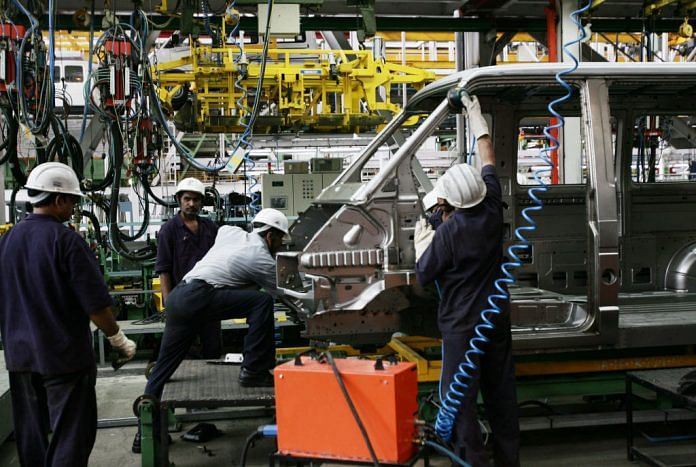New Delhi: A slowdown in demand, weakening consumer sentiment and tighter financing conditions is leading to massive pile up of inventory of both passenger vehicles and two-wheelers.
Although automobile dealers used massive discounts to clear their stocks and bring down inventory levels in January, stocks have once again built up.
A survey conducted by the Federation of Automobile Dealers Association (FADA) said the inventory reached “alarming” levels in February.
The inventory for passenger vehicles reached 50-60 days, 80-90 days for two-wheelers and 45-50 days for commercial vehicles, showed data released Wednesday.
An inventory of less than 30 days is usually considered healthy.
‘Slump in rural demand’
As of December, the inventory was 35-40 days for both passenger and commercial vehicles and 55-60 days for two-wheelers. This had improved in January to 30-35 days for passenger and commercial vehicles and 50-60 days for two-wheelers as massive discounts for clearing year-end inventory helped sales.
“There was an improvement in terms of capacity utilisation in the first half of 2018-19 in preparation of the Q3 (third quarter) festival season demand,” said Madan Sabnavis, chief economist at Care ratings.
“There was an expectation that automobile sales levels will accelerate in a normal year. But that did not happen, partially on account of a slump in rural demand,” said Sabnavis.
“One will have to wait till end March to see if spending picks up. April-May will be the next spending season with the onset of the marriage season and post Rabi harvest spending,” he said.
Also read: Volkswagen fined Rs 500 crore by NGT for damage to environment
‘NBFC liquidity crunch’
According to dealers, many factors impacted festival season demand, the ripple effects of which are being felt even now.
Rising interest rates, high fuel prices that peaked in October, tight liquidity conditions, stock market volatility and a rise in insurance premiums have impacted consumer demand and consequently hurt sales.
FADA data showed that registrations of passenger vehicles and two-wheelers contracted in the 42-day festival period spanning October and November 2018 compared to the corresponding year-ago period. In 2017, the festival period was between September and October. While two-wheeler registrations contracted by 13 per cent, passenger vehicle registrations were down 14 per cent.
FADA chief executive Saharsh Damani said tight liquidity conditions remain a factor even now, impacting sales.
Data showed registration of both passenger and commercial vehicles and two-wheelers contracted by 7-8 per cent in February when compared to the year-ago period.
“NBFC (Non Banking Financial Company) liquidity crunch that impacted both the end borrowers and dealer financing has had an impact on sales,” he said.
The IL&FS default in August 2018 triggered a systemic liquidity crisis with many NBFCs bearing most of the brunt.
Also read: Why India’s classic sedan Premier Padmini will never lose its charm







The heartbeat of the Indian economy is growing increasingly faint.